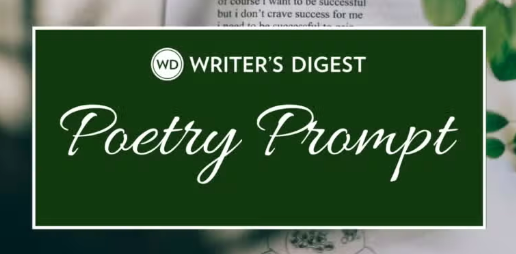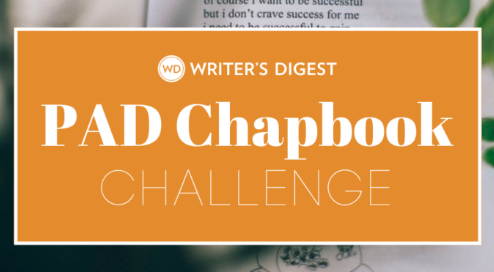Interview With Poet Kristina Marie Darling
I’m very pleased to share Kristina Marie Darling with the Poetic Asides community. Darling is a graduate of Washington University and has published several chapbooks, including Fevers and Clocks (March…
I'm very pleased to share Kristina Marie Darling with the Poetic Asides community. Darling is a graduate of Washington University and has published several chapbooks, including Fevers and Clocks (March Street Press) and The Traffic in Women (Dancing Girl Press), before her 2010 full-length collection Night Songs was released by Gold Wake Press. Naturally, she's well-published and has won quite a few awards, including residencies at the Vermont Studio Center, the Centrum Foundation, the Mary Anderson Center for the Arts, and the Prairie Center of the Arts.
Night Songs is a unique collection that brings together prose poems with two appendices--one comprised of found poems, the other of erasures. There are many great poems in Night Songs, but here is one I especially liked:
"A Clear Direction"
The cellist admitted to experiencing a sense of bewilderment in the presence of sheet music. As the small black notes curve and twist, scurrying like beetles across a clean white page, only the conductor's bobbing hand seems legible. Yet he soon discovered that any concerto may be navigated with a compass, its slim metal hands whirling under dim chandeliers. On the night of his last performance, the song's highest note became its northernmost when the scale ascended, a strange bird rising in the dark blue hall. The audience was startled by the intentionality of the music, its sudden attainment of a clear direction.
*****
What are you currently up to?
I just finished editing an anthology of prose poems by writers under the age of 40.The project is called narrative (dis)continuities: prose experiments by younger american writers and will be published by VOX Press sometime in 2011.I'm really excited to have had the opportunity to include work by writers like Kate Durbin, Kim Gek Lin Short, William Allegrezza, and Kyle McCord.
I've also been working on a new poetry book, which is going to be called Compendium.The manuscript is made up entirely of marginalia--footnotes, vignettes, glossaries, appendices, and notes scrawled inside the covers of books.I hope that the reader will be able to construct a narrative from these fragmentary texts, and that this story will be different for everyone who engages with the poems.
And as usual, I'm reviewing a never-ending stack of poetry books.
The first half of Night Songs is comprised of prose poems. What do you like about this form?
As a writer who uses lots of conventionally beautiful imagery, I find that it's very easy to become lofty when writing a lyric poem.But this isn't as much of a problem with prose poetry.I think this is because prose brings to mind a certain set of ideas in the reader.Most seem to anticipate a linear narrative where images, particularly sublime or transcendent ones, don't play much of a role at all.It's often great fun to undermine and manipulate these sorts of expectations.An image that might seem cliché or overly pretty in a lyric poem becomes new again when set against the preconceived notions that prose evokes for many readers.With that said, hybrid forms allow a writer to think about the sublime in a more interesting, complex way than we see in some other modes of expression.
As a follow-up question, do you have any tips for poets who attempt to write prose poems?
The prose poem can be anything you want it to be, so writers should never limit themselves.Some recent hybrid pieces I've seen use footnotes, endnotes, found texts, erasure, and various experimental techniques.Other writers use many of the strategies of formal poetry.For example, Samiya Bashir writes prose sonnets, which contain all the characteristics of a Shakespearean or Petrarchan sonnet except the line breaks.With that said, the possibilities are endless, and writers should always keep that in mind.
One complete section of Night Songs is made of found poems. Could you discuss the sources of your material and how you handled writing the poems?
The found poems in Night Songs mostly contain text from Victorian guides to music appreciation.As for the writing process, I definitely had to learn to let myself take liberties with the books that I was selecting material from.At first, I really wanted to maintain their integrity, and to accurately represent Victorian music culture.But the poems weren't very exciting this way, and neither did they seem to fit my voice or the rest of the manuscript. The more I changed the original pieces, rearranged them, and rewrote them, the more I liked what I was working on.When a project involves found texts, I think it's important to balance other writers' words with one's own aesthetic.For me, this was the most challenging part of incorporating a section like this in Night Songs.
The final section of Night Songs is called Erasures. Could you explain the technique used for the poems in this section?
For the erasure section of Night Songs, I chose poems from earlier in the manuscript and removed part of the text, creating a different piece than what I had started with.While some poets choose to erase the work of other writers (like Mary Ruefle in A Little White Shadow), dismantling my own poems felt right for this particular project.It's been said that a poem is built on its individual phrases and their rhythms.In my case, the erasures were intended as a return to my poems' most essential music.
Your individual poems have been published in several journals and publications. How do you handle the submission process?
I've always been an advocate of starting small.While it's great to shoot for the top, and send your poems to The New Yorker or The Atlantic Monthly, I think it's important for writers to realize that there are other ways to build an audience.Publishing in online journals and smaller print magazines can help a writer gain credentials, name recognition, and practice with the submission process.And these are all things that more prestigious journals look for.
This was certainly the case for me with my poetry criticism.It wasn't until I had significant experience working with small journals that The Gettysburg Review would consider looking at my clips.And when I wrote my first essay-review for them, I would have been lost without the expertise I gained writing for other magazines.
You’ve published several collections of poetry now, including chapbooks. What do you feel makes for a great collection? Do you have a method for gathering your poems together?
For me, a sense that the poems belong together is what makes a great collection.As a reader, I'm always drawn to books that create their own worlds. Keith Waldrop's Transcendental Studies, G.C. Waldrep's Archicembalo, Julia Story's Post Moxie, and Kent Shaw's Calenture are all good examples of this.Each collection presents the audience with a few carefully chosen images, characters, and places that reappear throughout the book.Readers watch them acquire an increasingly complex meaning as the sequence unfolds.This way, the poems illuminate and complicate one another.With that said, I've never thought of poetry books as a compilation of individual pieces, but rather as an attempt to orchestrate an aesthetic experience for the reader.In this respect, collections of verse are more like novels or plays than many of us believe.
Who (or what) are you reading right now?
Thalia Field's Point and Line and Wittgenstein's Philosophical Investigations.
If you could pass on only one piece of advice to other poets, what would it be?
Most writing teachers talk about the importance of reading poetry that's currently being published.But it's also necessary to read about philosophy, history, science, music, and just about everything else.Some of the most inspiring texts I've encountered--the ones that have had the most profound impact on my poems--weren't poetry-related at all.Writers should always keep an open mind about what they can learn from and be inspired by.
*****
To learn more about Kristina Marie Darling and her collection Night Songs, check out http://goldwakepress.org.
*****
Poets and Publishers! Interested in a Poetic Asides interview?Click here to find out how to make it happen.
*****
Follow me on Twitter @robertleebrewer
*****
Here are some poetry resources to check out:
2011 Poet's Market, edited by Robert Lee Brewer
The Poetry Dictionary, by John Drury
Writing the Life Poetic, by Sage Cohen





